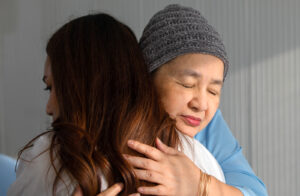“Across every sphere, from health to the economy, security to social protection, the impacts of COVID-19 are exacerbated for women and girls simply by virtue of their sex,” says a United Nations policy brief.
The Canadian Human Rights Commission has echoed this statement with its own, saying: “These disproportionate impacts could have long-term and far reaching consequences. If we are to restore momentum in our efforts to bring about gender equality in Canada, social and economic recovery efforts must take a feminist approach.”
The pandemic circumstances intensify inequalities related to gender, and other factors, such as economic status, race, culture, language, and other intersecting elements of our identities. Therefore, it’s important to understand the intersectional gendered implications of the pandemic, especially in the areas of gender-based violence, economic security, girls’ empowerment, and inclusive leadership.
Women vs men?
Peoples’ experiences of pandemics are grounded in longstanding social inequalities that impact all of us, every single day. Epidemiological analysis on gender and COVID-19 infection, recovery, and death rates is an ongoing process. According to the Public Health Agency of Canada, more women have been diagnosed with COVID-19 than men and more women have died as a result. This could be due to the high number of women living in nursing homes and seniors’ residences along with the high ratio of women working on the front lines of health services, caregiving, cleaning, and other essential roles where workers are at high risk of contracting the virus.
When it comes to the isolation measures imposed to prevent the spread of the virus, four key gendered impacts for women are:
- Increased risk of gender-based violence.
- More economic stress.
- Increased burden of caregiving and housework.
- Reduced access to support services.
In Canada, there are ongoing calls on government and health authorities for improved collection of data broken down by factors including race, ethnicity, disability, and gender identity. In July, the collection of race-based data in Toronto revealed that the virus is taking a disproportionate toll on racialized and low-income groups. We also know that Indigenous communities in Canada were disproportionately impacted by the H1N1 outbreak in 2009, and that may indicate higher risks in the wake of the COVID-19 pandemic. Many First Nations, Métis and Inuit communities initially closed their borders to prevent the spread of COVID-19, given the disproportionate risks they face. With the spread of the virus, people in Canada’s East Asian communities began experiencing more acts of racism. Some business owners reported fewer customers due to stigma around the illness.
Seniors and women living with disabilities
Women with disabilities may be at increased risk of contracting COVID-19 due to, for example, an inability to practice social distancing because of dependence on caregivers. There may also be more barriers to practicing hygiene recommended prevention measures. Multiple outbreaks of COVID-19 at long- term care homes in Canada have highlighted systemic gaps that senior and elderly women may face in such facilities, particularly related to adequate staffing and oversight.
The digital divide
Increased reliance on digital resources during the pandemic may be leaving some women and girls behind. Access to technology and digital resources is important not only for updates about the virus, isolation measures, and how to access government aid, but it’s also become a necessity for employment and education while in isolation.
There’s a digital divide for those living in rural and remote areas of Canada, where communities have less reliable internet and cellular service. People living on a low income may not have personal access to computers or mobile devices, particularly when multiple family members all need access at the same time for work and school. Those who previously relied on public resources like libraries for digital access can no longer do so.
Senior and elderly women may be less familiar and comfortable with using digital resources to access information and resources related to the pandemic. In Calgary, a phone hotline was set up specifically to serve seniors during the COVID-19 pandemic. Those living with disabilities, such as vision or hearing limitations, may not be provided with COVID-19 updates in an accessible format, such as closed captioning.
Increased gender-based violence?
The COVID-19 pandemic has been linked to spikes in domestic violence reports and crisis calls in China, France, and the U.K. This echoes what has happened in past disease outbreaks.
In Canada, women’s shelters and organizations have sounded alarms about the risk of increased violence. The Ontario Association of Interval and Transition Houses, for example, says 20 per cent of the 70 shelters it represents have had increased crisis calls during the pandemic. Some police services have also noticed more domestic violence reports. In addition, during the pandemic, one in 10 women are very, or extremely concerned about the possibility of violence in the home, suggests a Statistics Canada survey.
Rates of gender-based violence were high in Canada, even before the pandemic: on average, every six days, a woman is killed by her intimate partner. Thousands of women, girls, and trans and non-binary people now face a heightened risk of violence at home with COVID-19 isolation measures, whether it takes the form of emotional, physical or sexual abuse.
Where risk factors of gender-based violence at home already exist, like a sense of control, possessive jealousy, and misogynistic attitudes, various pandemic-related stressors can become triggers, including:
- Job losses and reduced income.
- Food insecurity.
- Fears about contracting the virus.
- Exacerbated mental health issues.
- Disrupted family routines, services, and resources.
Quarantines and social isolation mean that abusers and those they harm are in close proximity around the clock and other people aren’t around to see the signs of violence and intervene. Social isolation also creates new barriers for those experiencing abuse or violence to access services from shelters, sexual assault centres, and other community supports, which have continued to operate while facing many new challenges. Under normal circumstances, it’s difficult for women in abusive relationships to confidentially reach out for help, but the pandemic-related circumstances have made it even harder.
In light of this, it’s important to know about Signal for Help, a simple one-handed sign someone can use on a video call. It can help a person silently show they need help and want someone to check in with them in a safe way. Learn more about the signal and how to respond should you receive it (canadianwomen.org/signal-for-help).
Services for violence prevention and intervention were already struggling to meet needs even before the arrival of COVID-19. While the federal government and Ontario provincial government have announced emergency funding for women’s shelters and other services for those who experience gender- based violence, we know more funding is urgently needed.
On the front lines
Women remain highly concentrated in roles that put them on the front lines of both health care and jobs considered essential services during the COVID-19 pandemic. The industries with the highest ratio of women versus men in Canada are healthcare and social assistance (82.4 per cent), educational services (69.3 per cent), and accommodation and food services (58.5 per cent), reports Statistics Canada. In 2015, “around 56 per cent of women were employed in occupations involving the ‘5 Cs’: Caring, Clerical, Catering, Cashiering and Cleaning.”
The majority of female healthcare workers: doctors, nurses, medical lab technicians, respiratory therapists, personal support workers and other caregivers— don’t have the privilege of isolating at home because we’re depending on them to deliver care. Women who work as cleaners, cashiers, and food-service workers continue to play key roles in serving the public at grocery stores, drug stores, pharmacies, and other essential businesses and services that remain open.
Economic impacts
The pandemic is intensifying economic barriers women already face throughout Canada, and research suggests that, long term, pandemics can take a higher toll on women’s incomes than men’s. Women work in sectors and industries hardest hit by isolation measures. For instance, a higher proportion of women lost their jobs in the early stages of the pandemic. As of July, women’s participation in the workforce dropped to its lowest level in three decades, according to the Royal Bank of Canada.
With travel mostly shut down, layoffs have hit women working as flight attendants, cooks, servers, and cleaners in travel and hospitality. As stores have closed or reduced hours, there have been cutbacks for retail workers, many of whom are also women. Aside from industries shut down by COVID-19, women also make up the majority of Canada’s minimum-wage workers and part-time workers.
Poverty in Canada is already gendered. Women make up 60 per cent of those in Canada who are economically “struggling”, meaning that they report difficulty covering basic expenses and may need pay day loans or food banks to get by.
The COVID-19 pandemic means new challenges to delivering healthcare and support services for those who are struggling, such as food banks that can’t meet demand, and closures of public services including schools, community centres, and libraries. Although federal and provincial aid and relief announcements are encouraging, many women are still at risk of falling through the cracks.
Women as leaders
Women have taken powerful and visible roles in the response to COVID-19 in Canada and internationally. Some of them, such as Canada’s 10 chief medical officers, have quickly become household names while other women in leadership roles have been applauded. There is significant research to suggest that inclusive leadership leads to greater success; both gender and racial diversity are correlated with stronger business performance.
Surveys conducted at the beginning of the COVID-19 pandemic suggested that women in Canada were carrying a bigger burden of worry about the situation than men. Forty-nine per cent of women reported feeling “very worried” about the outbreak, compared to 33 per cent of men, indicated a poll by Abacus Data. The data also showed that men were less likely to follow the advice of public health officials. Seventy-five per cent of female respondents were afraid of a family member contracting the virus, compared to 64 per cent of men, suggested an opinion survey by Leger.
An April 2020 survey by Vanier Institute of the Family suggested that more women than men reported feeling anxious or nervous “very often” or “often” due to the pandemic, and that more women than men reported difficulty sleeping “very often” or “often” since the beginning of the pandemic.
The Canadian Women’s Foundation call to action
In response, the Canadian Women’s Foundation has launched the Tireless Together Fund: A national emergency fund to provide critical support to women and girls through the COVID-19 crisis. It will help vital services to reach women and girls now and continue to support them in the coming months. To learn more about the Fund, visit canadianwomen.org/covid-19.
This is an edited excerpt from the Canadian Women’s Foundation’s Women and Pandemic Fact Sheet. For sources and more information, visit: canadianwomen.org/the-facts.














